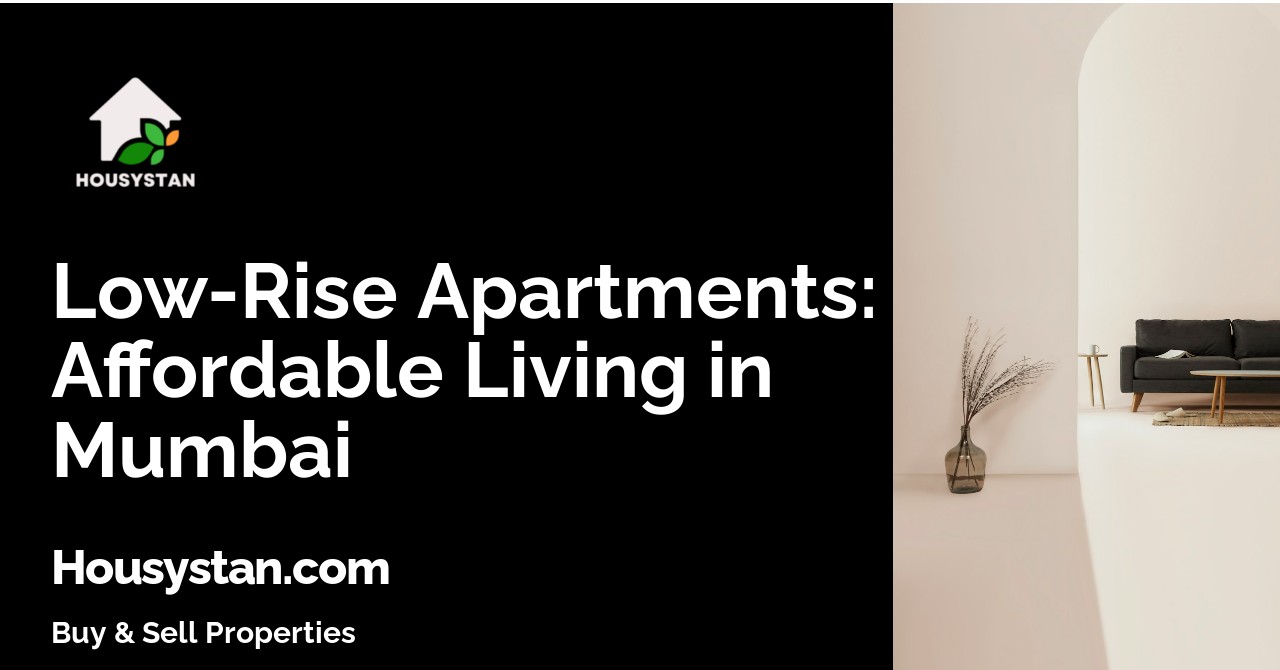Low-Rise Apartments: Affordable Living in Mumbai
Read latest blogs and articles from Housystan

The Information mentioned here was last updated on:
28/12/2025Low-Rise Apartments: Affordable Living in Mumbai
Looking for affordable housing options in Mumbai? Discover the many advantages of low-rise apartments in the heart of India’s financial capital. As the city continues to expand, finding a comfortable and cost-effective place to call home can be challenging. Low-rise apartments in Mumbai offer a practical solution for individuals and families seeking budget-friendly accommodations without compromising on lifestyle.
Low-rise residential complexes typically consist of buildings with fewer floors, often ranging between two to five stories. Unlike high-rise towers, these properties provide a more intimate community environment, enhanced privacy, and reduced noise levels. Residents enjoy quick access to their homes, minimal wait times for elevators, and a sense of neighborhood belonging that’s hard to find in larger apartment blocks.
- Verified Tenants/Buyers
- Unlimited Property Listing
- Zero subscription/charges fee
One of the main attractions of low-rise apartments in Mumbai is the affordability factor. Property prices and rental rates are usually lower compared to high-rise developments, making them an excellent choice for first-time homebuyers, young professionals, and small families. By choosing a low-rise building, residents benefit from lower maintenance costs and utility expenses, further easing the financial burden often associated with urban living.
Location is another crucial advantage. Many low-rise apartments in Mumbai are situated in well-established localities like Chembur, Mulund, Borivali, and Andheri. These neighborhoods offer easy access to schools, healthcare centers, shopping malls, public transport, and recreational spaces. Whether you work in Mumbai’s bustling business districts or prefer quieter suburban areas, low-rise options provide unmatched convenience for daily commuting and lifestyle needs.
Additionally, low-rise living often means better air circulation, more green spaces, and a closer connection to nature compared to densely populated skyscrapers. Residents enjoy open courtyards, landscaped gardens, and a comfortable atmosphere that promotes well-being and relaxation.
If you’re searching for affordable, high-quality housing in Mumbai, consider exploring low-rise apartments. Their unique blend of cost-effectiveness, strategic locations, and community-centric living makes them one of the best options for those looking to settle in this vibrant metropolis. Start your journey towards comfortable and affordable living by choosing a low-rise apartment in Mumbai today.